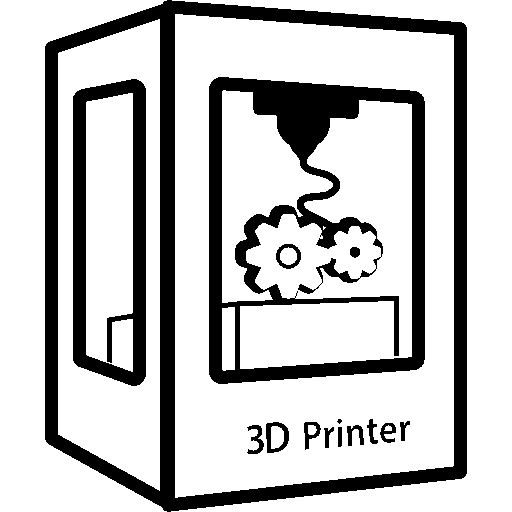Hi folks, I’ve had my ender 3 v2 for around 2 years and it’s been trouble-free until lately. Recently, I’ve had major issues with the first layer. I found a few worn components, so I got a dual gear extruder and replaced the nozzle, recald the esteps, bed level and z offset. Nothing I do seems to work.
The issue happens on the first layer when it first starts to extrude. The first 5mm or so of extrusion curls up behind the nozzle, then the extrusion sticks to the bed and it continues normally… Until it needs to starts a new extrusion, then the same thing happens…the curl.
I have to think it’s something with temperature, but I haven’t changed anything about the filament since these issues started.
Looking for any advice. Thanks!
What are you using to clean the surface? I had bought some IPA 70%, thinking all IPA was the same. It was not. I switched to IPA 90% and that one problem went away. (I have/had other problems.)
Usually just got water and soap.
Removed by mod
Here is an alternative Piped link(s): https://piped.video/uKN0VOuul0o
Piped is a privacy-respecting open-source alternative frontend to YouTube.
I’m open-source, check me out at GitHub.
Thanks for that link. I wouldn’t be surprised if this is my issue. I replaced a nozzle very recently and it seemed to improve things, but it quickly degraded. I also replwced the PTFE tube and likely did it wrong…though the symptoms existed before I replaced the tube. I also have a fan that has been on its way out for a while, so I could be getting heat creep. It could be a combo of all things. Either way, I have new fans on order and will be doing the rebuild. Thanks!
I gotta say a big thank you to everyone that responded. Your encouragement for me to take a breather and regroup with a cool head was much needed. Thank you all kind strangers :-)
You can try a few things. Add a brim to the part in your slicer. Look at your first layer to make sure the nozzle isn’t too far (you can find pics online for this).
And mostly importantly!! You might not believe this, but even if all of your settings are the same, you can get finger oils on the bed over time from grabbing prints. Wash the surface with soapy water and spray/wipe with rubbing alcohol between prints. Use a glue stick or hairspray if you’re still having adhesion issues. Make sure that the bed is 60-70 and that the first layer of first few layers are slow. You want a good base, that will keep the part from detaching from the bed.
This. Finger oils are the enemy. If you’ve never washed the bed with soap and water, it usually fixes adhesion issues on a properly leveled machine.
ok ok, I’ll put the old bed on after I wash it real good…I do this periodically but maybe I was eating chips or something.
Gahhhh same thing… I’m on day 4 of this bs. I’m gonna throw my printer out a window
Glass is really hard to stick to. You’ve gotta get the z axis just right. I know it was working before but it happens. Don’t give up but definitely take a break if you need. Highly recommend putting down some purple gluestick, it helps a ton. It isn’t your fault if you’ve cleaned the bed, it’s gonna take some patience. Maybe look into getting a PEI sheet if you don’t have one? There happens to be a limited time deal on one your size (235x235mm, ender 3 v2 and aquila are the same) on amazon for $10: https://a.co/d/emfbtnc
Not a referral link or anything, but I really recommend one. They’re usually around $15-20. I haven’t touched my glass bed since I got one. Other than that honestly dude just go back when you’ve got more patience and download a bed leveling test print, and keep tweaking.
A little aqua net hairspray will do the trick too.
It looks like your Z offset is too high. I think you calculated in the wrong direction. Your Z offset should be so that if you go to Z 0 then your nozzle would just barely hit the bed.
Don’t give up!
I forgot that I had a spare glass bed, still in box…I put it on and tried the same print with the same results…the curl!! I tried printing at both 190 and 200 on the head, 55 and 60 on the bed…still the same.
I use a glue stick specially made for 3D printing that works fantastic, but another great option is painters tape.
What print do you use to calibrate the Z distance? Slice a square that’s 1 layer thick. The exact thickness (0.2, 0.3, etc) isn’t as important. You want 1 layer. If the lines aren’t touching, then you’re too far. If the lines are touching but you’ve got ripply texture, too close. If the lines are touching and it’s smooth, you’re just right. See this for visual examples: https://help.prusa3d.com/article/first-layer-calibration-i3_112364
That’s a great article, thanks for the link. I had a suspicion that a ripple texture between lines is an indicator of too low, but it’s good to get that affirmation. I usually do a real-time final cal when it’s printing the skirt (micro up/down)
Have you tried a new nozzle?
If your nozzle is worn flat (from scraping), it could affect your nozzle-bed gap (assuming no adjustment). If the internal diameter is worn (from long-term usage or an abrasive filament), it could cause a type of under-extrusion.
Try a PEI bed. I just got an official creality bed on Amazon for $20 US.
Someone else mentioned a G10 printing surface. Any idea what’s better for PLA? Or what’s the difference between the two?
Not familiar with G10, but my PEI sheet has been the best thing for adherence with PLA I’ve used in the last 5 years. I’ve used hairspray, glue sticks, blue tape, glass, and combinations of them. Straight PEI is still better than all of them, for me anyway.
From what I read before I bought mine, smooth PEI works great for PLA, while the textured PEI is better for ABS and other types that have larger adherence issues.
Maybe you have too much squish?
I’ve tried raising and lowering the z-offset…higher just makes it more angry and lower doesn’t get to the point that it fixes it
Ok new symptom: the corners of a box that I’m printing are curling up
I had this happen on my ender 3 v2 recently as well, a thin layer of washable purple gluestick has solved it for me (though parts are now sometimes a bit difficult to remove and sometimes require a moist rag to get the gluestick residue off)
I’ve heard of using gluestick…but dang it sounds messy. Do you have a link to the stuff you tried?
Any brand will work. I dont like glue, but its easy to apply and also clean it with water. Glue can fix huge problems like uneven bed, wrong temp etc. You are facing common 3D printing problems. Not sticking to the bed and curling. It can be frustrating, get some patience and you will sort it out.
You did major upgrades, so tunning is hard to avoid. Do PID tuning for your hotend, your temps might be not stable. Check your hotend mount for play. Make sure your part cooling fan is off on the first layer. More squish, higher temp and low speed are your friends. Try with 205/60 C and 10-15 mm/s. Check your retraction, you might have oozing that can cause not sticking at first. If you are printing tiny parts like 5 mm circles on first layer you need to have crazy dialed printer to print that consistently. Still possible of course, but even then some issues at start /end of extrusion can occur. 0.24 mm first layer height is much easier to print than 0.15, simmilar thing with nozzle size. Your filament might be shit, better filaments are more forgiving.
Print 1 layer square and take a picture. Lines must fuse and surface shouldnt be rough when touching it. If you didnt print 100 squares dont give up yet 😉
Edit: any PVA glue stick (the one that is used by kids in school to glue paper)
Most brands should work fine. Same with hairspray.
I’ve been using glass print surfaces and glue stick for 10+ years. I just wash off the glass with warm water every 2-3 prints otherwise just add a new layer of glue stick before printing. I’m going to try a G10 print surface next as I finally found some in my country.
For issues with corners curling I either use a brim, or if a brim is not good for that model, I add a 1-2 layer circle at that corner in like tinkercad.






